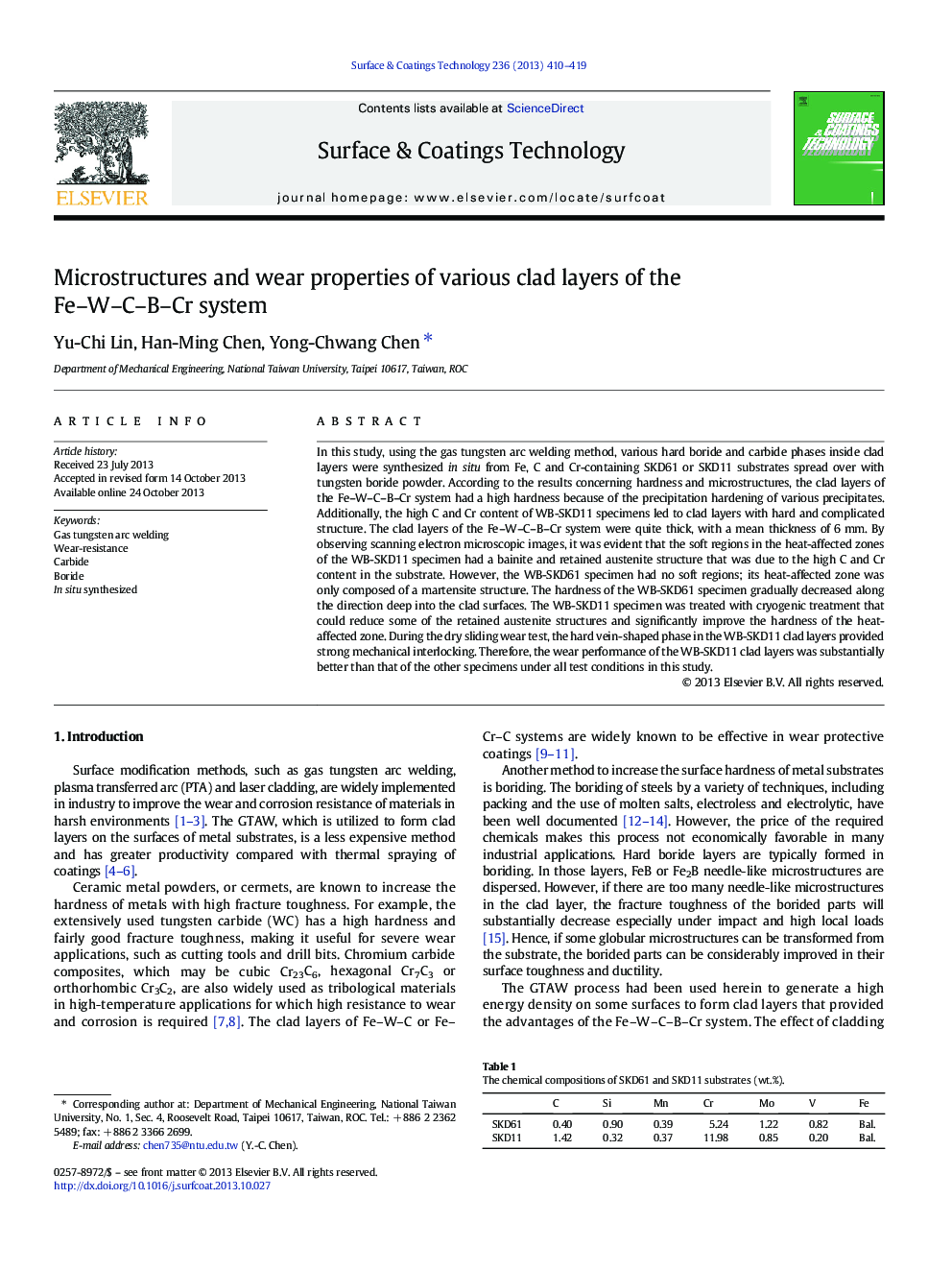| Article ID | Journal | Published Year | Pages | File Type |
|---|---|---|---|---|
| 8029027 | Surface and Coatings Technology | 2013 | 10 Pages |
Abstract
In this study, using the gas tungsten arc welding method, various hard boride and carbide phases inside clad layers were synthesized in situ from Fe, C and Cr-containing SKD61 or SKD11 substrates spread over with tungsten boride powder. According to the results concerning hardness and microstructures, the clad layers of the Fe-W-C-B-Cr system had a high hardness because of the precipitation hardening of various precipitates. Additionally, the high C and Cr content of WB-SKD11 specimens led to clad layers with hard and complicated structure. The clad layers of the Fe-W-C-B-Cr system were quite thick, with a mean thickness of 6Â mm. By observing scanning electron microscopic images, it was evident that the soft regions in the heat-affected zones of the WB-SKD11 specimen had a bainite and retained austenite structure that was due to the high C and Cr content in the substrate. However, the WB-SKD61 specimen had no soft regions; its heat-affected zone was only composed of a martensite structure. The hardness of the WB-SKD61 specimen gradually decreased along the direction deep into the clad surfaces. The WB-SKD11 specimen was treated with cryogenic treatment that could reduce some of the retained austenite structures and significantly improve the hardness of the heat-affected zone. During the dry sliding wear test, the hard vein-shaped phase in the WB-SKD11 clad layers provided strong mechanical interlocking. Therefore, the wear performance of the WB-SKD11 clad layers was substantially better than that of the other specimens under all test conditions in this study.
Related Topics
Physical Sciences and Engineering
Materials Science
Nanotechnology
Authors
Yu-Chi Lin, Han-Ming Chen, Yong-Chwang Chen,
